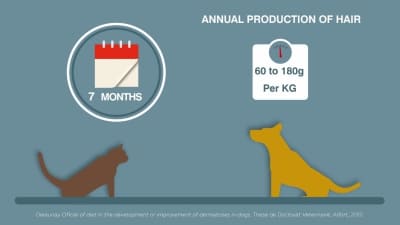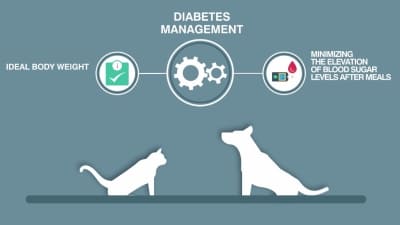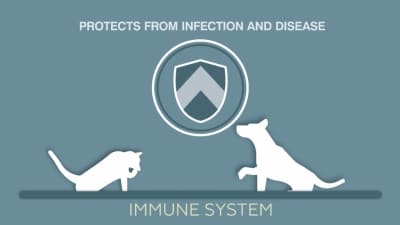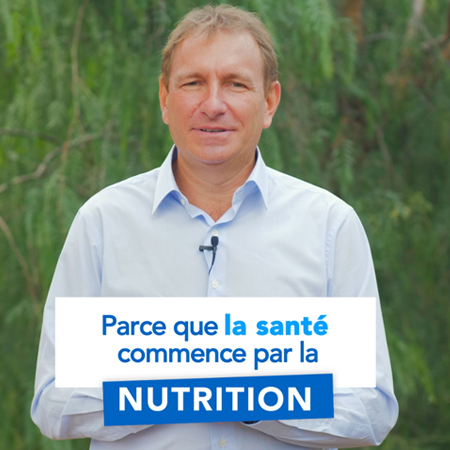Proteins play an important role as they are an essential component of the skin and hair. The hair is made up of 95% protein, of which almost 1/3 is used for skin renewal and hair growth. The role of proteins is therefore fundamental to the beauty of the skin and coat.

VETERINARY HPM Dog Food Range
Our dog food range is based on a formula low in carbohydrates and high in protein adapted to the needs of your dog, lifelong carnivore!
Virbac VETERINARY HPM Dog Food is designed as healthy food for dogs, specifically tailored to meet their carnivorous needs. With a composition rich in protein and low in carbohydrates, this dry dog food supports effective weight management, enhances skin and coat health, and promotes overall well-being. Recommended by veterinarians and popular among the pet owners, this range offers some of the best dog food available, helping your pet remain active and vibrant. The inclusion of essential nutrients also provides vital immune support, enhances mobility, and improves digestive health, making it an excellent choice for puppy food and adult dogs alike.
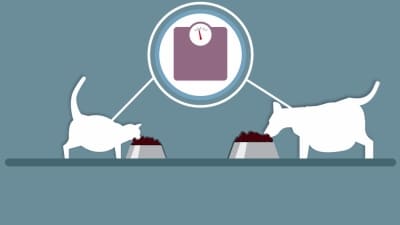
By promoting satiety and the lean body mass development (including muscle) rather than fat, protein helps dogs and cats maintain a healthy weight. Fibre is also added as well as L-carnitine to help limit fat storage.
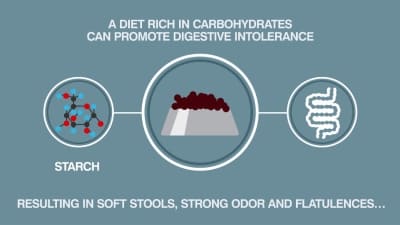
A food that is too rich in carbohydrates can be poorly tolerated and cause loose stools and unpleasant odours.
Low carbohydrate levels, well digestible proteins and the addition of functional ingredients (lactobacilli, montmorillonite, sepiolite, etc.) help to maintain good digestive tolerance.
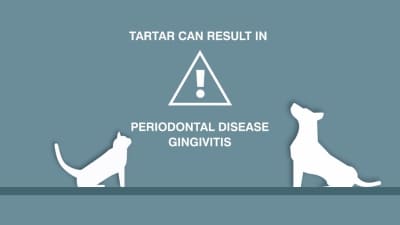
Pentasodium triphosphate supplementation limits tartar formation and contributes to good oral health
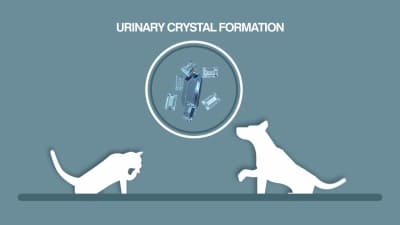
By stimulating drinking and promoting naturally acidic urine, protein helps to maintain good urinary health.
A functional ingredient, cynarin, is also added to help dilute his urine.

Reduced phosphorus intake and its digestive chelation by chitosan help maintain healthy kidney function.
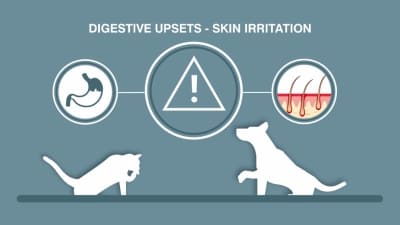
To avoid food allergies, our food does not contain beef, dairy, egg, wheat, corn, gluten or soy (ingredients that can cause food allergies), which reduces the risk of food intolerance.

High protein content and chondroitin and chitosan supplementation contribute to the proper functioning of the musculoskeletal system

more than 6 vets out of 10 recommend our food
(source: GIE AC 2020 survey, 1519 responses)

on average, our food is rated above 4/5
(source: * conso animo, shopmium, que choisir and 60 millions conso)

94% acceptance for medium and large dogs, 92% for small and very small dogs and 84% for cats

- A diet that favours animal proteins corresponds to their taste and naturally provides them all essential nutrients for optimum comfort and quality of life.
- Despite their domestication, dogs and cats remain carnivores.
- Their diet must take into account their nutritional needs, specific to their anatomy and physiology.
1. What are the 3 types of dog food?
The three main types of dog food are dry kibble, wet food, and raw food. Dry kibble is convenient and helps maintain dental health, wet food provides additional moisture and can be more appealing to some dogs, while raw food is often chosen for its natural ingredients and nutritional benefits. Each type has its own advantages, and the best choice depends on your dog's specific needs and preferences.
2. What is basic dog food?
Basic dog food generally refers to standard formulas designed to meet the general nutritional needs of dogs. These foods provide essential nutrients like protein, fats, vitamins, and minerals but may lack the specialized ingredients found in higher-quality or specialized dog foods. Basic dog food serves as a foundation but might not offer the tailored benefits for specific health conditions or life stages.
3. What should I look for in high-quality dog food?
When selecting high-quality dog food, consider the following factors:
Protein Source: Look for animal-based proteins such as chicken, beef, or fish listed as the main ingredient. Avoid foods with plant-based proteins or by-products as the primary source.
Nutrient Balance: Ensure the food provides a balanced mix of proteins, fats, vitamins, and minerals. High-quality foods often have a higher protein content and lower carbohydrate levels.
Ingredient List: Choose foods without artificial colors, flavors, or fillers. Opt for those with high-quality, natural ingredients.
Ash Content: Check the ash content on the label. High ash content can indicate poor-quality ingredients. Aim for a kibble with low ash content and high-quality meat.
4. Is it safe to switch my dog’s food brand or type? How should I do it?
Yes, it is generally safe to switch your dog’s food brand or type, but it should be done gradually to avoid digestive upset. To switch, follow these steps:
- Gradual Transition: Start by mixing a small amount of the new dog food with the current food. Gradually increase the proportion of the new food over 7-10 days.
- Monitor Your Dog: Watch for any signs of digestive issues, such as diarrhea or vomiting. If any problems arise, consult your veterinarian.
- Adjust as Needed: Based on your dog's response, adjust the transition pace to ensure a smooth change.
5. Can dry dog food meet all my dog's nutritional needs?
Yes, high-quality dry dog food can meet all your dog’s nutritional needs if it is formulated with balanced ingredients. Look for best dog food such as VETERINARY HPM® that includes high-quality animal proteins, essential fats, and a proper balance of vitamins and minerals. Ensure that the food is appropriate for your dog’s life stage, size, and activity level.
6. Can I mix kibble with other types of dog food?
Yes, you can mix dog kibble with other types of dog food, such as wet food or fresh food, as long as you ensure that the overall diet remains balanced and meets your dog’s nutritional needs. Mixing can help with palatability and provide variety but consult with your veterinarian to ensure you are not disrupting the nutritional balance.
7. Can I give my puppy adult dog food?
It is not recommended to give your puppy adult dog food. Puppies have specific nutritional needs for growth and development that are best met by puppy food. Adult dog food does not provide the same level of essential nutrients required for a puppy’s growth.


